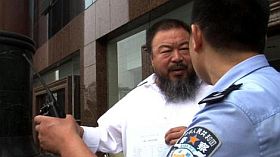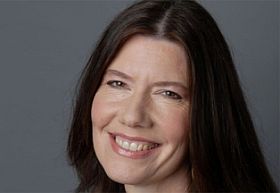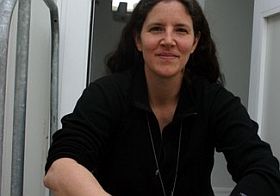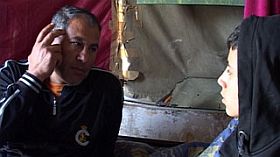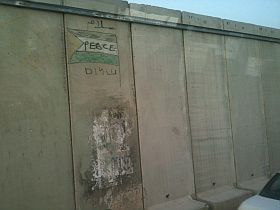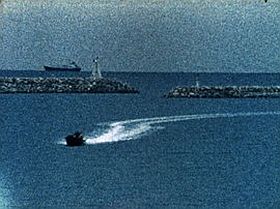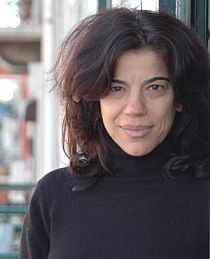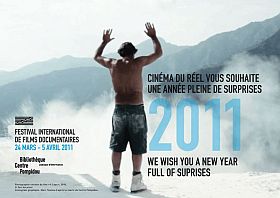From being an arthouse feature film director known for extravagance and his work with legendary Klaus Kinski, he is now (also) a hit among documentary lovers, even if he would not accept to be a documentarian as his many joyful attacks on the direct cinema people have shown… (Tue Steen Müller)
… Og min læsning af Werner Herzogs film har længe været, at hver eneste scene er en tydeliggørelse på film af hvad, han tænker og skriver netop de sekunder, han optager scenen, og de sekunder jeg senere ser den i biografen. (Allan Berg Nielsen)
HERZOG’S MISSING QUESTIONS…
Skrevet den 01-11-2018 10:13:37 af Tue Steen Müller
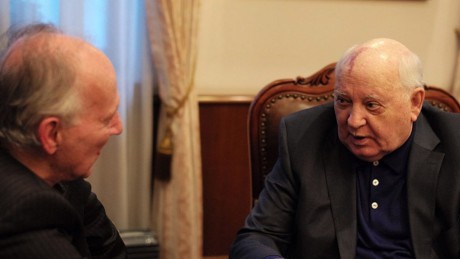
An understatement: They were angry my friends from Lithuania, Georgia and Ukraine. After having watched Werner Herzog and André Singer’s “Meeting Gorbachev”. Nothing, absolutely nothing about the violent Soviet attacks that took place in Vilnius, in Riga, in Georgia…
Did he ask these questions, Herzog? Did he answer, Gorbachev? Why were they not in the film?
Have to confess that I did not react immediately on this failure from the side of Herzog & Singer but was taken by the compassion and admiration that Herzog demonstrated towards the 87 year old former statesman.
Yesterday, the Lithuanian documentary by Giedre Zickyte, “How We Played the Revolution” was shown as part of the impressive documentary retrospective from the small Baltic country. In the fine film by Zickyte, based on archive, Gorbachev reacts in the Duma towards to the tanks entering Vilnius and the brutality performed by his people at the tv station. We want them to stop (= we will make them stop) the demonstrations and then we can talk. Words to that effect. People were killed in Vilnius as they were in Riga, where the – among others – two cameramen of Juris Podnieks were shot down by Soviet soldiers. It’s all documented, Gorbachev knew what happened, he was in charge as the president, he wanted to establish more democracy in the country, he did not understand that the Baltics and Georgians and the Ukrainians wanted freedom, independence.
The film by Herzog/Singer wants to give a historical background through archive and interviews. Essential questions were not raised or touched upon.
WERNER HERZOG – ECSTATIC TRUTHS
Skrevet den 30-10-2018 17:49:55 af Tue Steen Müller
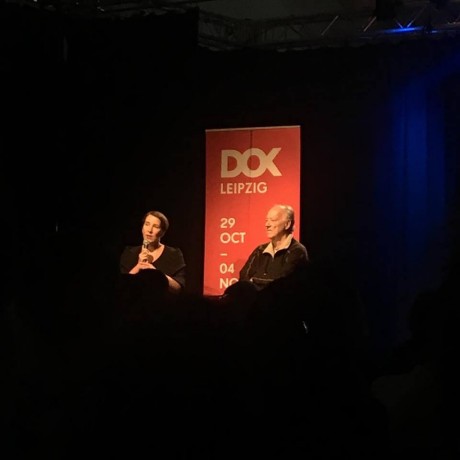
Photo by film director Andrijana Stojkovic. Thanks.
10.30 in the morning, Kupferstrasse in Leipzig. There is a line outside the Kupferhalle, where Werner Herzog is to hold his masterclass or as the DOK Leipzig organisers called it, “a conversation” with Kristina Jaspers, who knows about the director and has written a book about him, (as has Danish Kristoffer Hegnsvad) (And let me lead those who are interested to this site´s “Collected Posts on Werner Herzog”:
http://www.filmkommentaren.dk/blog/blogpost/1940/).
Those in line waited to see if there were tickets to get. We had already been given tickets so in we (my wife and I) went with high expectations as we had heard that Herzog is a brilliant and inspiring speaker. And deep as had colleague Allan Berg experienced at the Danish Film School.
He was not deep this morning where everyone got in – festival director Leena Pasanen mentioned that we were around 500 to listen to the master. Not deep but entertaining he was from the very beginning, where he corrected Pasanen on how to set the audience microphones in the right positions! A director going in details.
Herzog followed up on yesterday’s film “Meeting Gorbachev” saying that on all three conversation occasions Gorbachev came from and was brought back to the hospital, where he is getting treatment. They had three times 11/2 hour of conversations. And how did you prepare for the conversations, the question came, “nobody can tell you how to conduct a conversation”, Herzog said. It’s a matter of whether you connect immediately or not. He repeated from yesterday that he thought the demonization of Russia should stop.
Apart from some provocations – there are 4500 festivals in the world but only 4 good films per year! – he gave good background to “Lessons of Darkness”, one of his masterpieces, where he worked with British Paul Berriff, according to Herzog an undaunted cameraman, who could go down in the desert to film near the burning oil. He also revealed that the quote in the beginning of the film credited Blaise Pascal, was actually written by Herzog himself, Pascal could not have done it better!
A question came from the audience about his voice; he always makes the commentary himself. “As I have written the text myself, I have to read it as well. As before on many occasions – said to a young filmmaker – “there’s no excuse any longer, you can shoot on small cameras or with your cell phone, I don’t believe in film schools as they are set up, I have set up my rogue film school and it works. You can make a feature film for 10.000$, a documentary for 1000$ but you need a vision and courage.”
“I feel a big responsibility, when I am making a feature film. I want to control the cash flow every day… I want to stay under budget”. “Not possible the producer said”. “I will stay under budget”, I said, “and I made a deal that I would get a bonus if it happened. It did!”
The entertainer is also an actor and a hilarious scene with Herzog as an actor was shown after a more serious insight to a scene from my favourite Herzog documentary, “Little Dieter Needs to Fly”. Dieter wanted to talk about death, Herzog said, I told him that I could do that much better in images, and we saw the scene, where Dieter stands in front of the jellyfish aquarium.
“Lo and Behold”, we did not see a clip from that film, but Herzog declared that he has made the only competent film on the internet.
DOK Leipzig 2018 OPENING
Skrevet den 30-10-2018 08:39:39 af Tue Steen Müller
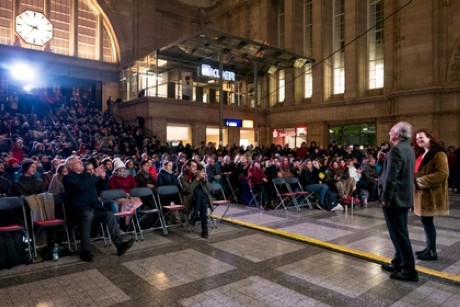
… And Werner Herzog on stage introducing the film – co-director André Singer was not there but his son was Nick Singer, who made the music for the film. Before the film the organisers had found a funny clip with the young rebellious Herzog talking about filmmaking, a bit “peinlich” Herzog said, not at all, a fine reference back to a filmmaker, who if anyone has put his mark on German and world cinema.
The film has a kind and compassionate approach. Herzog, he says so in the interview, loves Gorbachev for his silent contribution to the reunification of his Germany, for his nuclear disarmament agreements with the Americans, for his positive attitude to the Western world.
To the interviews made by Herzog are added archive material and interviews, for instance with Lech Walesa, Hungarian Németh and George Schultz who was with Reagan at the famous meeting in Iceland concerning the reduction of nuclear weapons. There are some fine anecdotes in this historical part.
In that way it is obvious that the film wants to give the audience a historical background, fair enough as the film goes on television, for me who is old enough and knows the history, the most appealing is to watch and listen to the 87 year old man, sitting there, not in good health but open to say that it was wrong to give up the USSR, expressing worries for what is happening now in his country and elsewhere. Moving is the sequence were he talks about his wife Raisa – “when she died I felt that my life was taken away from me”. A statesman yes, but also a human being suffering a loss.
ANDRÉ SINGER ON MEETING GORBACHEV
Written 28-10-2018 10:18:58 by Tue Steen Müller
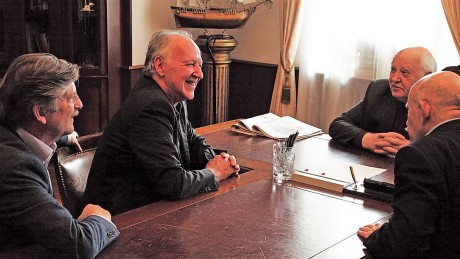
From variety.com I received a very informative interview with André Singer on his making of the documentary with Werner Herzog, written by Damon Wise. The film is to be shown at the Ji.hlava Festival and opens the DOK Leipzig tomorrow night. Singer talks about how he approached Gorbachev, how he included his long time partner on many films, Werner Herzog, how other interviews were conducted, how he had a structure in beforehand that was dropped after the interviews that Herzog conducted – “… The essential quality we wanted from the interview was of two intelligent and concerned men engaged in discussion – not a formal Q&A. Gorbachev never asked for questions in advance and was happy to enter into any area of questioning Werner wished to take…”.
André Singer, who explains the technical issues connected to the shooting of the three interviews, is going to Moscow beginning of November to show the film to Gorbachev, “this legendary giant of the 1980s and ’90s”.
To conclude the fine interview Singer says “…I feel strongly that the most important thing about the film is that it “humanizes” him. I found him a warm, genuine, generous man who has been neglected by history and in his current rather sad position isolated in Moscow deserves to be heard and remembered. If the film helps achieve that, I would be a happy man!”.
On the photo you see André Singer, Werner Herzog, Gorbachev and the interpreter Pavel Palazchenko.
More on André Singer, The True Documentary Gentleman, in Danish on http://www.filmkommentaren.dk/blog/blogpost/3032/
https://variety.com/2018/film/festivals/mikhail-gorbachev-werner-herzog-andre-singer-1203006531/
DOKLeipzig OPENS WITH GORBACHEV, HERZOG AND SINGER
Skrevet den 24-07-2018 15:28:28 af Tue Steen Müller
It’s a scoop for the DOK Leipzig festival, edition 61 (!) to have “Meeting Gorbachev” as the opening film on the 29th of October.
And to have Werner Herzog present to talk about the film and attend screenings of
other works, that carry his signature.
In the proud press release it is written about the film:
“With “Meeting Gorbachev”, Werner Herzog and André Singer have painted a human portrait of one of the most important politicians of the past century. Who is the man that brought the Cold War to an end? Through Mikhail Gorbachev, the world changed significantly and yet he remains a great enigma as a human being. From his humble beginnings as the son of a farmer, Gorbachev worked his way up to the post of President of the Soviet Union and shook the nation to its foundations in a time where there appeared to be no resolution to the conflict between East and West. In the film, Herzog and Gorbachev sit together in the former’s Moscow office, engaging in intense conversations about the past and the winding path of history. Time and again their attention returns to the reunification of Germany. The two men treat the difficulties and successes that the former President of the USSR was met with during his tenure. Gorbachev also speaks very openly about the mistakes that he made at the time, about decisions that he might approach differently from today’s perspective. However, the film also deals with the present and future as well, treating questions like: Why is the political situation in both the USA and Russia so difficult at the moment? “Meeting Gorbachev” aims to provide answers for the generations that witnessed and experienced Gorbachev’s policies and their effects first-hand, but also for young individuals who now find themselves living in another reality and are only familiar with the Cold War from history books and stories…”
https://www.dok-leipzig.de/en/
KRISTOFFER HEGNSVAD: WERNER HERZOG
Skrevet den 31-12-2017 14:20:26 af Allan Berg Nielsen
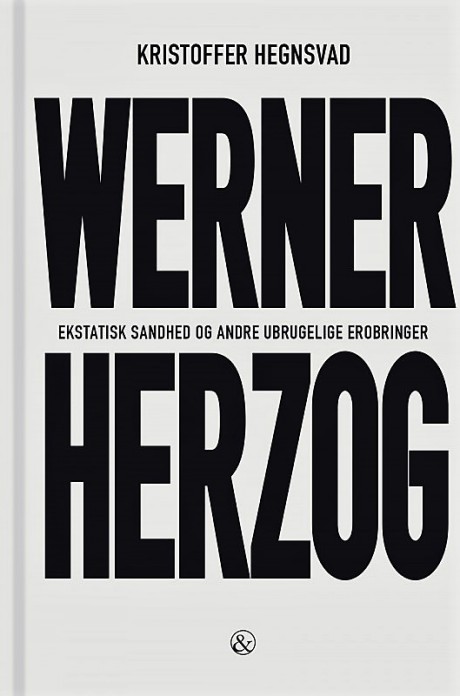
DEN ANDEN USKYLD
Den trænede læsers (filmlæsers / filmpublikums) læseproces (filmtilegnelse) bør se således ud: 1) at opleve teksten (filmen) umiddelbart og uhildet, 2) at nærme sig teksten (filmen) fra så mange sider som man kan overkomme og med så megen viden og indsigt som muligt – Erik Lunding: ‘den eneste gyldige metode er den pluralistiske’ – dvs. at forstå og vurdere alle detaljer og deres sammenhænge og helheder: tekstens (filmens) udseende og lyd, dens ord, dens billeder og figurer, vers og sætninger (optagelser og scener), dens motiv og holdning og genre, dens helhed – og tekstens (filmens) placering midt i sine kontekster, trådene ud til psykologiske, sociale, historiske og litterære (cinematografiske) sammenhænge, alt det tidsbetingede i den tidløse enestående tekst (film). 3) Når dette er nok, da: at glemme det hele og opleve teksten (filmen) igen, i den anden uskyld som er både forståelse og oplevelse, som er kunstværkets mening og hensigt. (Poul Borum, 1966, frit modificeret ved parenteser af abn, idet Borum jo skrev om litterære tekster)
1
Kristoffer Hegnsvad tager i sin bog Werner Herzog – Ekstatisk sandhed og andre ubrugelige erobringer udgangspunkt i sit møde foråret 2016 med Werner Herzog på The Rogue Film School i München og bruger herefter sin viden om ham og sine læsninger af hans film som illustrationer, billedliggørelser og eksempler i en skildring af Herzogs filosofi om tilværelsen og æstetikken, virkeligheden og den kunstneriske bearbejdelse af den, skriver en Herzogs poetik så at sige ved siden af Aristoteles’ oldtidige essay.
Måske er det formidling mere end undersøgelse, altså mere akademisk undervisning og folkelig oplysning end det er nye læsninger af filmværkerne. Men hvis formidling og fortælling er bogens ambition – ja, så er den velskabt og lykkedes – og jeg tror bestemt det er fortællelysten som driver Hegnsvads tekst så lydefrit og letlæselig. Vil jeg nyere og mere komplicerede læsninger af filmene skal jeg jo blot købe en bog mere og lægge den ved siden af eller i forlængelse af Hegnsvads inden for sin ambition så fine tekst. (5. december)

Werner Herzog
2
Hegnsvads tekst forudsætter – opdager jeg nu – alligevel dejligt indforstået (jeg holder rigtig meget af indforståethed jeg ikke er berettiget til) at jeg har set alle Herzogs film, hvad jeg ikke har, og er fortrolig med dem, hvad jeg følgelig heller ikke er. Han anfører smukt originaltitlerne i kursiv. (Jeg har nu alle mine dvd-kopier af filmene – langt fra en komplet samling – fremme på bordet ved afspilleren plus mine udklip og Cronins Herzog on Herzog og jeg indser at det her kommer til at tage lang tid…)
Jeg noterer som et løfte til mig selv og mit blogindlæg, at jeg bør nævne og kommentere hans læsninger, som jeg er begyndt at standse ved, som jeg efterhånden på vej ind i bogen ser at der i det også er en systematik. Så jeg må engang opregne dem forfra fra først i bogen til sidst. Skelne mellem de søgende læsninger og de påståelige. (9. december)
3
Titlen – uden den for mig endnu kryptiske undertitel – er præcis. Bogen handler om instruktøren, ikke som biografisk person, men som tænkende og iagttagende og handlende menneske, som filosof, som antropolog, som kunstner. Bogen er ikke en række filmlæsninger som konkluderes, den er snarere en konklusion på et studium af Herzog som offentlig person, hvor filmværkerne hentes ind som belæg for fremstillingen, sammenfatningerne.
Hegnsvads undersøgelse gælder således ikke Herzogs film, men hans tænkning, Hegnsvads bog er ikke en filmbog (en undersøgelse af et samlet filmværk), den er en filosofisk monografi over en tænkers tankesystem (hedder det sådan?), en gennemført formidling af egne studier (samtaler, forelæsningsnotater, primær og sekundær litteratur) af dette system, som her eksemplificeres i denne tænkers enkeltværker, i hans film og tekster og andre formuleringer. (9. december)
4
Hegnsvads undersøgelse udvikler sig til at omfatte Herzogs professionelle moral, hans interviewteknik, hans metode for manuskript, for treatment. Jeg er kommet til side 152, et afsnit, som begynder her, hedder ”Formen under pres”, her er undertitlens begreber ”ekstatisk sandhed” og det ”ubrugelige” under behandling: ”Den gådefulde realisme i Werner Herzogs dokumentarfilm forsøger gennem sin form at identificere sig med det ikke-identiske og derved åbne for en mere rummelig ekstatisk sandhed end bogholdersandheden, der forsøger at identificere alting.” Senere i afsnittets fremstilling indkredses det andet begreb. Herzog opererer, skriver Hegnsvad ”med to forskellige karaktertyper. De er enten små ubrugelige som hittebarnet Kaspar Hauser i Jeder für sich und Gott gegen alle og den psykiatriske patient Bruno S. i Stroszek eller store erobrere af det ubrugelige, som Klaus Kinski i hovedrollerne i Aguirre – der Zorn Gottes og Fitzcarraldo.” Jeg er ved at forstå undertitlen, sådan mere middelbart… (10. december)
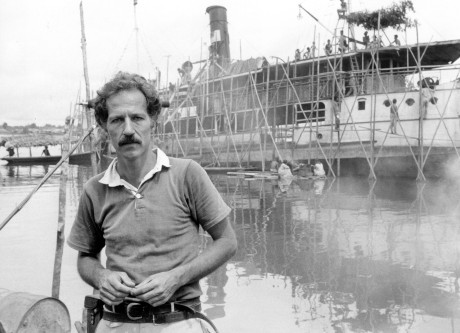
Werner Herzog under optagelserne til Fitzcarraldo, 1982
5
Det er en stor og imponerende bog. Jeg burde skrive en rigtig anmeldelse. Indledning, læsning, vendepunkt, konklusion. Det har jeg ikke kræfter til, ikke viden nok til. Her er i stedet for mine notater fra læsningen, lidt læsning ad gangen, nogle af disse decemberdage. Det må være tilladt i bloggenrens løsere format, tæt som den er på dagbogens. Dagene med bogen har været og er rige, hvad jeg har af Herzogs film konsulteres ind imellem, som Cronins store interview og så mine egne notater, især fra to seminarer med Herzog på filmskolen, er ved hånden. Jeg prøver og prøver at få det til at hjælpe til en forståelse af Hegnsvads arbejde i dets litterære sammenhæng. Gentagelser eller nybrud? (15. december)
6
Jeg vil læse Hegnsvads bog færdig. I dag og i morgen. Ikke lave andet. Så skrive om den læsning – ind imellem jeg skriver meget forsinkede julekort…
Først på eftermiddagen, i dag allerede, er jeg pludselig færdig med selve teksten. Jeg har læst hele fremstillingen, nu de sidste fascinerende sider i én uafbrudt optagethed som var det en plotbåret roman. Endnu står tilbage de stringent klare og fornemme afsnit med noter, filmografi, bibliografi, liste over andre Herzogværker, litteraturhenvisninger, billedliste. Det hele, både disse afsnit og den nu helt uomgængelige tekstdel, vil jeg i fremtiden vende tilbage til hver gang Herzog er på tale omkring mig, i mig. Kristoffer Hegnsvad har skrevet en fantastisk bog. (25. december)
Kristoffer Hegnsvad: Werner Herzog – Ekstatisk sandhed og andre ubrugelige erobringer, 2017, 285 sider. Forlaget Jensen & Dalgaard. Filmkommentarens vurdering: 6/6
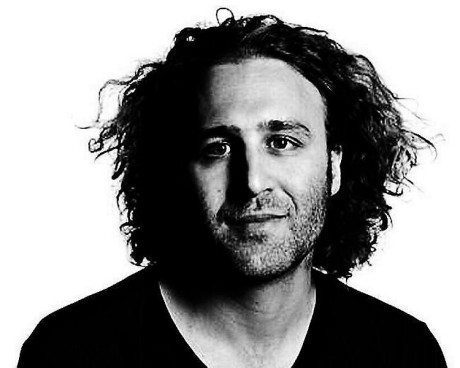
Kristoffer Hegnsvad
JOE BINI INTERVIEW
Written 13-05-2017 09:41:28 by Tue Steen Müller
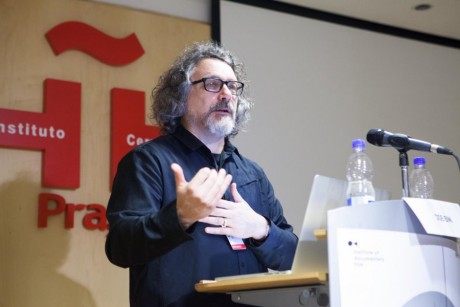
I was there in Prague when American editor Joe Bini made his lecture in connection with the East Doc Platform. I wrote a small report that first of all had its focus on his collaboration with Werner Herzog. Now you have the chance to read a more in-depth interview with the editor, made by Marta Obršálová and brought on the IDF (Institute of Documentary Film) website, link below.
Two clips to stimulate your appetite to read it all:
On trailers: To be honest, I hate trailers. For me, it is putting the cart before the horse, as they say. Especially when you are asked to cut a trailer before the film has been edited or perhaps even shot. How can I make a trailer when I do not know what the film is about? It’s more like advertising. I absolutely understand how important it is but it is not something I am good at. I did a couple early on in my career and I just realized it is definitely not something I enjoy doing…
On the director and editor relationship: A film is generally edited by two people – the director and the editor – two people who have a different relationship to the same material. In a documentary, I usually start my job after the filming is done. By that point, the director has already formed a relationship with the material. He or she already has an idea about the characters – who is lying, who is telling the truth, who is important in the story or not. The editor does not have any of that in his mind. The editor has only what they see when they look at the footage. I have often had the experience, especially with young filmmakers, when they come back from shooting, they say to me: This is what happened, it was an amazing scene, the guy was great! etc. But after I have a look I often have to say: Maybe so, but that’s not what I saw…
https://dokweb.net/articles/
LO AND BEHOLD – REVERIES OF THE CONNECTED WORLD
Skrevet den 06-04-2017 08:16:07 af Allan Berg Nielsen
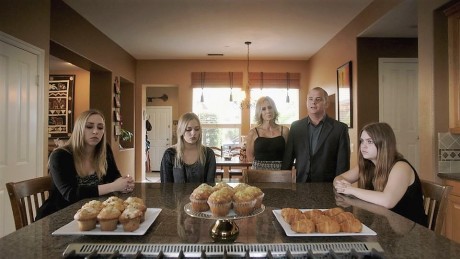
Bag alle Werner Herzogs spørgsmål ligger i grunden en skepsis, bag empatiens høflighed ligger i grunden en tøven, i fortællestemmens basgang af antropologisk essayistik et misantropisk syn på virkelighedens tilstand, bag den både den dybt alvorlige og den meget morsomme attitude lurer en ængstelse, en sorg, en fortvivlelse, og denne sidste kommer bestemte steder i hans arbejder til udtryk i vrede. Selv om han involverer sig i møderne som han kalder optagelserne af sine samtaler med vidner og andre medvirkende, holder han dem på afstand. Blidt og elegant distant.
Denne stiliserede scene er undtagelsen. Her deler Herzog familiens sorg, vrede og rædsel ved det modbydelige, den har været offer for, og distanceringen i set up og iscenesættelse som en teaterscene bliver i filmens sammenhæng af ganske anderledes udarbejdede scener til en udhævelse, sådan viser det antropologiske undersøgelsesresultat, som filmen udgør, som dette tableau er en vital del af, at mennesket er ondt, også mod mennesket, også mod det menneske, som trods det onde i sig er godt. Hele dette store tema Jesus af Nazaret talte om, efterviser Herzog i sin antropologiske femlæggelse, i værk efter værk, også i dette seneste, her i denne opstilling af en familie, hvor en datter mangler.
Werner Herzog møder på rejser fra scene til scene mennesker, alle monomane eksperter på hver deres felt, seriøse videnskabsmænd og excentriske amatører med alvorlig optagethed og venlig koncentration, som sikrer, at hver samtale lykkes ved hans tilstedeværelse, og jeg følger hans fascination, lytter til hans kloge fortællestemme, den stemme, som for mig er halvdelen af hans film, denne og en række af hans tidligere, som hans opmærksomme tilstedeværelse i alle situationer, hans diskrete indlevelse og i det færdige værk, hans distante skepsis, nogle gange hans rædsel.
Et foto fra ulykken af en ilde tilredt død kvinde, den fjerde, den fraværende søster i familien, har været delt på internettet i syg nysgerrighed, som Herzog udtrykker det, og han fortsætter: ”Vi viser ikke dette foto. Vi viser et værelse i hjemmet, musikværelset, hvor hun holdt af at opholde sig.” Og dette afsnit tre af de ti afsnit, som Lo and Behold – Reveries of the Connected World består af, som er et stort filmessay over internettets virkelighed, har overskriften The Dark Side og konkluderer: ”Internettet er det ondes væsen”, som moderen i familien siger, og Herzogs kapitel tre er i sin alvorlige tableauform en lille film i sig selv, som tidligt i værkets fremadskriden i møde efter møde, ofte med begejstrede vidner, skyder en en tidlig tøven ind.
USA 2016, 98 min. Filmkommentarens vurdering: 6/6 penne. Begynder med en visning i dag 17:00 som månedens dokumentar i Cinemateket i København.
SYNOPSIS
Oscar®-nominated documentarian Werner Herzog (Grizzly Man, Cave of Forgotten Dreams) chronicles the virtual world from its origins to its outermost reaches, exploring the digital landscape with the same curiosity and imagination he previously trained on earthly destinations. Herzog leads viewers on a journey through a series of provocative conversations that reveal the ways in which the online world has transformed how virtually everything in the real world works – from business to education, space travel to healthcare, and the very heart of how we conduct our personal relationships.
http://www.loandbehold-film.com/
JOE BINI AT EAST DOC PLATFORM
Written 10-03-2017 15:36:12 by Tue Steen Müller
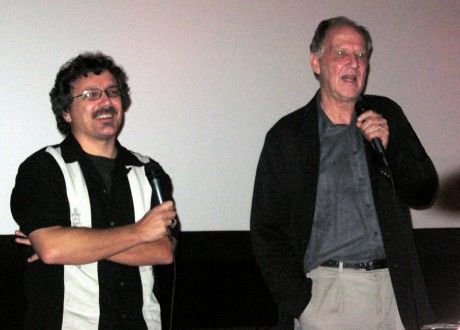
Of course it was a scoop for the organisers, IDF (Institute of Documentary Film), to have an editor capacity like American Joe Bini as a tutor and to have him deliver a masterclass like he did yesterday at the Cervantes Institute for a full house. It was obvious that we liked what we heard and saw from the editor, who has been working with Werner Herzog on 27 films.
Bini started his class reading from a paper what he thought of film or rather – liked that – cinema language, because of the reading difficult to convey to you, and after he told us how much he dislikes American documentaries for their journalistic language, he became lovely concrete in his story about how he has been working with Herzog.
He showed clips from ”Little Dieter Needs to Fly” (1997), ”Into the Abyss” (2011) and ”Grizzly Man” (2005) as well as the opening of the film he edited ”Roman Polanski: Wanted and Desired” (2008) by Marina Zenovich.
Herzog is an instinctual filmmaker, Bini said. He shoots so little footage, it’s insane how little; he decides in advance that this is gonna be in the film. Most of the films with him have been edited in 3 months. With ”Grizzly Man” I found out that this was to be a film about ”the relationship between this German guy and the American bear lover, Timothy”, who had a totally different understanding of nature.
The famous narration of Herzog… With ”Grizzly Man” we made it during the editing. Herzog wrote a text, I often corrected his English, he had a microphone, the recording was done and we put it in immediately.
How do you decide to take on a film? I watch material and if I see that you speak the language of cinema…
Photo: Bini and Herzog at a screening – years ago.
https://www.dokweb.net/en/
LO AND BEHOLD
Som en del af CPH.DOX’s teknologiprogram på DemokratiScenen under FOLKEMØDET er der i dag 16. juni 18:30 Danmarkspremiere på Werner Herzogs film om internettet Lo And Behold: Reveries Of The Connected World.
CPH: DOX skriver i sin indbydelse: ”Vi er så afhængige af internettet, at vores afhængighed nærmest er blevet usynlig for os. Det er udgangspunktet i Werner Herzogs nye foruroligende, tankevækkende og dybt underholdende dokumentarfilm om internettet og den kunstigt intelligente fremtid. Er du på Folkemødet, så kom til Danmarkspremiere på torsdag klokken 18:30 på Demokrati Scenen. Vi følger filmen op med en debat om kunstig intelligens! ” (ABN 16-06-2016)
https://www.youtube.com/watch?v=Zc1tZ8JsZvg (Trailer)
http://www.filmkommentaren.dk/blog/blogpost/1940/
DICTA
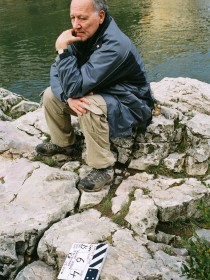
Mens jeg fortumlet tænker videre over alt det, som skete i mig ved at lytte til de to dages samtale mellem Joshua Oppenheimer og Werner Herzog på Den danske Filmskole for en uge siden, hjælper kollega Tue Steen Müller mig ved at hitte dette blogindlæg fra kottke.org frem. Det kan for mig lige nu fungere som en slags huskeliste (for Herzog vendte ofte tilbage til et eller andet dictum, som han kalder disse sætninger) og dermed mulighed for videre overvejelse for en vigtig del af Herzogs bidrag disse dage. Resten står så tilbage som opgave. Og dertil kommer selvfølgelig især at få orden i tankerne om det, Joshua Oppenheimer sagde. Men altså indtil videre denne blogpost af Jason Kottke (14.januar 2015):
”Paul Cronin’s book of conversations with filmmaker Werner Herzog called ”Werner Herzog – A Guide for the Perplexed”(2014). On the back cover of the book, Herzog offers a list of advice for filmmakers that doubles as general purpose life advice.
1. Always take the initiative.
2. There is nothing wrong with spending a night in jail if it means getting the shot you need.
3. Send out all your dogs and one might return with prey.
4. Never wallow in your troubles; despair must be kept private and brief.
5. Learn to live with your mistakes.
6. Expand your knowledge and understanding of music and literature, old and modern.
7. That roll of unexposed celluloid you have in your hand might be the last in existence, so do something impressive with it.
8. There is never an excuse not to finish a film.
9. Carry bolt cutters everywhere.
10. Thwart institutional cowardice.
11. Ask for forgiveness, not permission.
12. Take your fate into your own hands.
13. Learn to read the inner essence of a landscape.
14. Ignite the fire within and explore unknown territory.
15. Walk straight ahead, never detour.
16. Manoeuvre and mislead, but always deliver.
17. Don’t be fearful of rejection.
18. Develop your own voice.
19. Day one is the point of no return.
20. A badge of honor is to fail a film theory class.
21. Chance is the lifeblood of cinema.
22. Guerrilla tactics are best.
23. Take revenge if need be.
24. Get used to the bear behind you.”
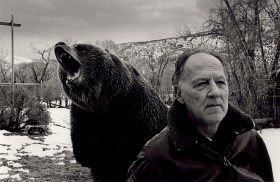
Bloggeren Jason Kottke tilføjer: “I bet this is some of the stuff you learn at Herzog’s Rogue Film School: The Rogue Film School is not for the faint-hearted; it is for those who have travelled on foot, who have worked as bouncers in sex clubs or as wardens in a lunatic asylum, for those who are willing to learn about lockpicking or forging shooting permits in countries not favoring their projects. In short: for those who have a sense of poetry. For those who are pilgrims. For those who can tell a story to four year old children and hold their attention. For those who have a fire burning within. For those who have a dream.”
Og jeg får lyst til at tilføje, at mine forældres og læreres formaninger og opdragelse ikke altid er moralisme; som regel er det hårdt tilkæmpede personlige erfaringer derude fra virkeligheden. Det er sådan jeg lytter til Herzog, helt ærligt. (ABN 18-01-2015)
LESSONS OF DARKNESS
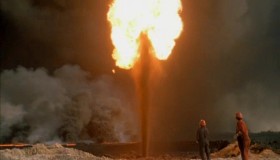
Året begynder for mig med en begivenhed. På filmskolen skal jeg fredag og lørdag lytte til forelæsninger af Werner Herzog og Joshua Oppenheimer. Lidt om Herzog først, Oppenheimer senere:
Mit første møde med Herzogs film var sent. Det var på Tue Steen Müllers arbejdsværelse hjemme hos ham og Ellen Fonnesbech-Sandberg i Nørre Farimagsgade. Jeg var gæst, boede der (jeg kan finde på at blive længe), jeg var omgivet af hans kæmpesamling filmkopier, det var morgen, han skulle på arbejde på EDN, fruen skulle på DR, også arbejde, jeg havde fri, så han gav mig lektier for: du skal se den her og derefter er du forandret. Og det blev jo stort. Jeg har kun et notat i min lommebog bevaret:
”Rekviem for en ubeboelig planet” hedder filmen på dansk. Vi både ved og ved ikke, vi er i Kuwait, efter Golfkrigen -> rekviem, dødemesse, elegi, klagesang, smerte, sorg. Er det ikke tankerækken? Hvem var fjenden? Filmen angiver ingen politisk adresse. Værket interesserer sig alene for sorgen og så derefter handlingen (oliebrandene slukkes). Ikke moralsk som et samfundsmæssigt alternativ, men amoralsk som den kunstneriske modvægt til klagen. Altså KLAGE og HANDLING som et æstetisk balancesystem. Det er fravær af budskab og meddelelse, nærvær af konstruktion og værk. Det er messe i kirken. Det er statuarisk på torvet.
Siden har jeg ikke sluppet Herzog. Siden har jeg beundret ham i ét og alt. Min fascination af manden blev låst fast, da jeg på filmskolen i 2006 deltog i et seminar, en mesterklasse eller hvad det var (blot vidunderligt). Jeg skrev også de dage noget om den film ned i lommebogen, ikke noget jeg tænkte, denne gang noget, Herzog fortalte:
Det var i anekdotens form (Herzog fortæller i anekdotens form); han brugte anekdoten som en foredragsholder bruger powerpoint fotoet, men langt dybere end en sådan illustration. Herzogs anekdoter fæstner sig i forelæsningens løb som kapitler i hans film. Disse skrev jeg ned:
1) I ”Lessons of Darkness” findes ikke én scene, ikke én optagelse, ikke ét eneste billede af et stykke jord bevaret uskadet. Det indledende Pascal citat forklarer det, men Pascal har ikke skrevet den tekst, kunne ikke have skrevet den. Herzog har skrevet den selv, og han har, ja, det sagde han, gjort det for at nå en dybere sandhed. ”Pascal kunne ikke have skrevet det bedre”, siger han leende.
2) Cinéma vérité hører 60’erne til. ”Depict on Reality” kræver nu (i 2006) ganske andre greb. Herzog ved, han er oppe mod både dinosaurer og redskaber som photoshop og manipuleret reality, og han synes kendsgerninger (facts) er uinteressante, kedelige.
3) ”Lessons of Darkness”er ”highly stylized”, den er mytiske landskaber, iscenesatte landskaber. Kuwait nævnes ikke, Saddam Hussein nævnes ikke, tilbagetoget nævnes ikke og sådan videre. “Satan skaber en illusion for os, olien, som er flydt ud overalt, ligner vand.”
Det her er blot lidt fra mine notater. Lars Movin derimod skrev en omhyggelig artikel om Werner Herzogs æstetik, “Bogholdersandhed versus poetisk sandhed”, hvor han blandt andet refererer Herzog seminaret i 2006. Det var i Kosmorama 242/2008; link nedenfor. (ABN 03-01-2015)
“Lessons of Darkness” (Lektionen in Finsternis), Tyskland 1992, 52 min.
http://www.wernerherzog.com/113.html
http://www.kosmorama.org/Arkiv/242/Artikel2.aspx
HERZOG ON DEATH, DANGER, AND THE END OF THE WORLD
Steve Rose from The Guardian brings Saturday April 14 a very interesting article on and interview with Werner Herzog, whose ”Into the Abyss” is screened all over the world in these months. I have taken out this quote from the article that you should definitely read in its full version:
”Into The Abyss (photo) is not overtly about capital punishment. Herzog describes it more as “an American Gothic” – a survey of a Texan landscape of poverty, intoxication, incarceration and death. But he’s explicit about his opposition to the death penalty: “I was born when Nazi Germany was still around, and simply because of all the atrocities and the genocide and euthanasia, I just can’t be an advocate of capital punishment. There’s something fundamentally wrong in my opinion, but I would be the last one to tell the American people how to handle criminal justice.”
As well as the documentary, he made another four 50-minute documentaries interviewing other death row inmates. “Not interviewing,” he corrects me. “I’m not a journalist; I’m a poet. I had a discourse, an encounter with these people but I never had a list of questions.”” (TSM 17-04-2012)
Into The Abyss is out on DVD and Blu-ray on 30 April.
http://www.guardian.co.uk/film/2012/apr/14/werner-herzog-into-the-abyss
NED I AFGRUNDEN
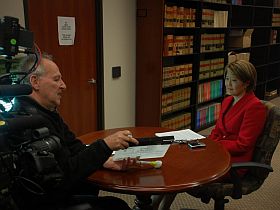
Anmeldelserne forlanger simpelthen, at man finder frem til en biograf, hvor filmen vises:
MEDMENNESKELIG NYSGERRIGHED
”Til at begynde med virker Herzogs anti-form næsten demonstrativt umoderne. Men efterhånden som flere talende ansigter afleverer deres vidnesbyrd, efterhånden som filmens tema bliver belyst, giver formen mening…”
”Werner Herzog har tydeligvis opbygget en form for tillid og forståelse med de mennesker, han taler med i ‘Ned i afgrunden’. Måske fornemmer hans interviewofre en medmenneskelig nysgerrighed i stedet for en journalistisk professionalisme hos Herzog. I hvert fald sker der noget forbavsende, da præsten Richard Lopez lige har fortalt om det græs, de køer og de egern, der fylder hver af hans dage med glæde. ‘Kan du fortælle om de egern?’ spørger Herzog, og som tilskuer sidder man og tænker på hvad dælen det er for at bizart spørgsmål, men knap er præsten færdig med at beskrive de frejdige gnavere før han sammenligner dem med de mænd, han be’r den sidste bøn for – og så bryder han ud i tårer. Var det Herzogs sjette sans, der slog til?” (Per Juul Carlsen)
HVER FILM SOM KAMMERMUSIK
“Herzog er (ved siden af en fortsat, men svækket række spillefilm, red.)… blevet en myreflittig dokumentarist, der i essayistisk form undersøger alle mulige emner, som optager ham: renæssancemusik, alternativ luftfart, buddhistisk fordybelse, menneskers overlevelse på udsatte steder, idealisters store selvbedrag og lejlighedsvise sejre. Herzog anbringer sig selv i billedet, interviewer, kommenterer, reflekterer og strukturerer hver film som kammermusik.”
”Into the Abyss bærer undertitlen ’A Tale of Death, A Tale of Life’. Sagen er dødsstraf, og Herzog gør emnet konkret ved at analysere en amerikansk forbrydelse i alle faser af forløbet. Tonefaldet er langtfra lidenskabeligt. Filmen er en disciplineret øvelse i at anskueliggøre et problem, så tilskueren selv kan tage stilling, men må være gjort af forstokket stof for ikke at reagere på dét, som Herzog har vist ham.” (Bo Green Jensen)
I DET MILDESTE TONELEJE
”Med sin læspende tyske accent lyder Herzog som en parodi på Djævlens advokat, men faktisk er han en beundringsværdig interviewer, der stiller alle de rigtige, fordomsfri og svære spørgsmål til en række hårdt prøvede mennesker. Hans instinkt for at trykke på skjulte knapper i det mildeste toneleje er forbløffende. Det sker med spørgsmål, som kvalificerer undersøgelsen, snarere end de søger kontante svar. Herzog gør, hvad han altid gør: vælger et blødt punkt og graver sig ind i menneskelivets verden. Hvad han finder dernede i små og store afgrunde, er hvad han viser frem. Så må vi selv blive klogere. Hvis vi da synes, dét er en pointe.” (Kim Skotte)
Werner Herzog: Ned i afgrunden (Into the Abyss), USA, Storbritannien og Tyskland 2011. 106 min. Fotografi: Peter Zeitlinger. Dansk distribution DOXBIO www.doxbio.dk Litt.: Per Juul Carlsen, Filmland 4.4.2012, Bo Green Jensen, Weekendavisen 4.4.2012, Kim Skotte, Politiken 4.4.2012.
Filmen havde premiere i aftes ved en enkelt samtidig visning i 50 biografer. Og fra i dag kan den ses i Café-Biografen i Odense og i Grand i København. (ABN 05-04-2012)
INTO THE ABYSS
by Tue Steen Müller
Steve Rose from The Guardian brings Saturday April 14 a very interesting article on and interview with Werner Herzog, whose ”Into the Abyss” is screened all over the world in these months. I have taken out this quote from the article that you should definitely read in its full version:
”Into The Abyss (photo) is not overtly about capital punishment. Herzog describes it more as “an American Gothic” – a survey of a Texan landscape of poverty, intoxication, incarceration and death. But he’s explicit about his opposition to the death penalty: “I was born when Nazi Germany was still around, and simply because of all the atrocities and the genocide and euthanasia, I just can’t be an advocate of capital punishment. There’s something fundamentally wrong in my opinion, but I would be the last one to tell the American people how to handle criminal justice.”
As well as the documentary, he made another four 50-minute documentaries interviewing other death row inmates. “Not interviewing,” he corrects me. “I’m not a journalist; I’m a poet. I had a discourse, an encounter with these people but I never had a list of questions.””
Into The Abyss is out on DVD and Blu-ray on 30 April.
http://www.guardian.co.uk/film/2012/apr/14/werner-herzog-into-the-abyss
CAVE OF FORGOTTEN DREAMS
by Mikkel Stolt
What does a cave being enclosed for thousands of years sound like? Or smell like? This film actually tries to tell us, but first of all it shows us what it looks like. Or to be more precise, it shows us what the 30.000 years old cave paintings look like. And let me tell you right away, that despite being a 3D sceptic I was really flabbergasted by the effect that this format gives you; a unique sense on how the ancient artists used the curves and hollows of the cave walls to create effects that are right down spectacular. Even from today’s perspective this is world class art!
The paintings do take up a lot of time in this film and you actually get the strange sensation that even Herzog himself was overwhelmed by the art in these caves and thus has made a slightly more conventional documentary. We do get a lot of his trademarks, though: The philosophical narration, the “leading” questions to interviewees and the oddball characters, for instance the “perfumerist” who is skilled in finding hidden caves using his nostrils. Also, a typical Herzog-moment comes when his voice narrates that the footprints of a wolf and an 8-year-old boy were found next to each other. Did the wolf stalk the boy, did they walk together as companions or were the footprints sat 10.000 years apart? “We will never know”. Herzog also wants to put art, music and the understanding of human evolvement into perspective and it really does work. But first and last are the paintings themselves of paramount interest to him. Even when we almost think the film is over, we get the best seven or eight minutes of them all: the camera dwelling on the walls with very simple lighting effects and some really beautiful music – an original score by Ernst Reijseger as far as I can detect.
However, a few “buts” arose in my mind. At an early point in the film, one of the scientists asks the crew to be silent so we can hear the sounds of the cave. Herzog can’t stand that silence more than 10 seconds but soon adds a heartbeat and then music, and shortly it gives you an uneasy feeling about the director’s choices. And apart from when we see the paintings themselves; the 3D format is interesting at best and somewhat annoying and distracting at worst.
But in the end the film is just wonderful and Herzog does the unthinkable: he lets us feel that he put the matter of the film in a predominant position because he didn’t have a choice. These paintings are essential to mankind, the film says, and I agree. 5 point nibs (Posting November 14 2011)
2 comments to Cave of Forgotten Dreams:
Leena Pasanen wrote 16-11-2011 22:49:18: Why can’t we just face the fact that even the masters can be out of their comfort zone and not fully know what they are doing?! 5/6 is very generous in my opinion.
Mikkel Stolt wrote 21-11-2011 11:27:58: Hi, Leena. Good to hear from you. I usually don’t have any problem critisizing the masters (or anybody else 🙂 ). I didn’t find Scorsese’s Harrison-film especially good and Herzog’s “My Son, My Son, What Have Ye Done” was an even bigger challenge to watch. However, in this film the problem was maybe that Herzog was too much in his comfort zone. But I must admit I was truly moved by it.
WERNER HERZOGS FILMS FOR PURCHASE
by Tue Steen Müller
Herzog is – mostly due to this blog’s Allan Berg, a true admirer of the work of the German director – one of the most noticed and praised names of this site. If you write his name in the ”search”, you get 33 hits. From being an arthouse feature film director known for extravagance and his work with legendary Klaus Kinski, he is now (also) a hit among documentary lovers, even if he would not accept to be a documentarian as his many joyful ”attacks” on the direct cinema people have shown. (Tue Steen Müller 17-04-2012)
HERZOG ON DEATH, DANGER AND THE END OF THE WORLD

Steve Rose from The Guardian brings Saturday April 14 a very interesting article on and interview with Werner Herzog, whose ”Into the Abyss” is screened all over the world in these months. I have taken out this quote from the article that you should definitely read in its full version:
”Into The Abyss (photo) is not overtly about capital punishment. Herzog describes it more as “an American Gothic” – a survey of a Texan landscape of poverty, intoxication, incarceration and death. But he’s explicit about his opposition to the death penalty: “I was born when Nazi Germany was still around, and simply because of all the atrocities and the genocide and euthanasia, I just can’t be an advocate of capital punishment. There’s something fundamentally wrong in my opinion, but I would be the last one to tell the American people how to handle criminal justice.”
As well as the documentary, he made another four 50-minute documentaries interviewing other death row inmates. “Not interviewing,” he corrects me. “I’m not a journalist; I’m a poet. I had a discourse, an encounter with these people but I never had a list of questions.””
Into The Abyss is out on DVD and Blu-ray on 30 April.
http://www.guardian.co.uk/film/2012/apr/14/werner-herzog-into-the-abyss
Anyhow, it is now not difficult to get hold of his films, dvd boxes have been published, download is possible and festivals are making retrospectives of his work. AND the director is still enormously productive. Recently the upcoming Toronto IFF announced the world premiere of a new Herzogian piece – ”Cave of forgotten Dreams”, the title of a film that offers an ”exclusive access to the Chauvet caves of southern France, capturing the oldest known pictorial creations of humankind in their astonishing natural setting. He (Herzog, ed.) puts 3-D technology to a profound use, taking us back in time over 30,000 years.”
Indiepixfilms is the one that now offers a Werner Herzog Collection for purchase. Mostly of his feature films but also including a neo-classic documentary as ”Little Dieter Needs to Fly”. (dvd – Region 1). (TSM Posting August 12 2010)
www.indiepixfilms.com
MIN BEDSTE FILM OG MIN BEDSTE FJENDE
af Allan Berg Nielsen
I aften skal vi i min filmklub se en vild film. I hvert fald vildt krævende film, flere år under praktisk forberedelse med konkret fysisk arbejde, forfulgt af uheld efter uheld under optagelserne, efterstræbt af medierne hele vejen undervejs med rygte efter rygte. Og så pludselig blev der stille om den. Selv de største film lever kort i offentligheden og i biograferne. Nu har denne film imidlertid nogle år været tilbage sammen med de andre, Herzog lavede med Klaus Kinski, i dvd-udgave i det smukke sæt HERZOGKINSKI, fem beslægtede historier plus historien om de fem historier, Mein liebster Feind, 1999, som i den grad er en beslægtet historie, skønt den formelt er en dokumentarfilm, de fem formelt spillefilm. Herzog sætter altid “dokumentarfilm” i anførselstegn. Og den ene gang, han ikke gør det, kalder han Fitzcarraldo “min bedste dokumentarfilm”.
Bagsiden på filmens cover fotæller historien: “Peru. Iquitos er en by, som omkring århundredskiftet er isoleret midt i junglen. I udkanterne af byen står nogle få hytter og rådner i mudderet. I centrum findes de nyrige gummibaroners prægtige huse. Det er i disse omgivelser rige på groteske kontraster, at Brian Sweeney Fitzgerald – Fitzcarraldo – som de indfødte kalder ham, drømmer sin drøm om at bringe Enrico Caruso og Sarah Bernhardt sammen i en stor forestilling i en fejring af den store opera.
For at finansiere sin fantastiske drøm, beslutter Fitzcarraldo at udnytte et umådeligt areal med gummitræer bag de upassable Ucayala vandfald. For at omgå denne barriere, får han bogstavelig talt løftet sin store floddamper over et bjerg fra den ene gren af floden til den anden. Med støtte fra en indiansk stamme og fortryllet af alle tiders største sanger på grammofon kæmper Fitzcarraldo mod feber, moskitoer og kvælende hede for at præstere det umulige.”
Werner Herzog: Fitzcarraldo, Tyskland, 1982, 157 min. Medvirkende Klaus Kinski og Claudia Cardinale. Foto: Thomas Mauch. Mein liebster Feind. Tyskland, 1999, 95 min. Medvirkende Klaus Kinski, Claudia Cardinale m.fl. På dvd i bokssættet HERZOGKINSKI, Anchor Bay Entertainment, UK 2004 (Blogindlæg 28. januar 2009)
AT STUDERE WERNER HERZOG
af Allan Berg Nielsen
Når man som jeg lever fjernt fra biografer, er man nødt til at tage sagen i egen hånd. Og jeg er både bestyrtet og lykkelig over, hvad dvd-udgivelsernes voksende mængde gør ved mine muligheder. Jeg må tænke mig om, begrænse mig, lægge en plan. Og den er lige nu: én instruktør om måneden. En af de store. Og Werner Herzog er så blevet denne måneds navn her hos mig.
Jeg begynder simpelt hen med hans biografi, som Paul Cronin i sin bogs forord skriver den så minimalt og elegant: “Det meste af, hvad man har hørt om Werner Herzog er usandt. Mere end om nogen anden instruktør, nulevende eller afdød, er antallet af falske rygter og lodrette løgne, som er spredt om denne mand og hans film forbløffende.” Og efter research og lange interviews, hvor han prøver at finde huller i Herzogs argumentation og modsigelser i hans udtalelser konkluderer Cronin: “… at enten er han mesterløgner eller mere sandsynligt, han har hele tiden fortalt sandheden.” Og han fortsætter:
“Heldigvis er der nogle basale kendsgerninger, som er indiskutable. Han blev født i München i Tyskland i 1942, og som barn levede han i Sachrang, en afsides bjerglandsby i nærheden af den østrigske grænse. Han begyndte at rejse til fods i fjorten års alderen og havde sin første telefonsamtale, da han var sytten. For at finansiere sine tidlige film arbejdede han, samtidig med han gik i skole, på et stålværk som svejser på natskiftet. Det resulterede i “Herakles” fra 1961. Han instruerede fem spillefilm med Klaus Kinski, og Francois Truffaut kaldte ham engang den vigtigste levende filminstruktør. Men nota bene, han instruerede ikke Kinski fra bag kameraet med en riffel i hånden. Han satte ikke nogens liv på spil under optagelserne til “Fitzcarraldo”. Han er ikke sindssyg, heller ikke excentrisk…”
“Hans arbejde er ikke forankret i den tyske romantiks tradition. Og han lider ikke af storhedsvanvid. Snarere er han et yderst venligt, generøst og beskedent menneske, som blot er velsignet med en ekstraordinært visionær og intuitiv intelligens. Dertil en barsk humor, som kan efterlade tilhøreren på aldeles glat is…”
Anledningen til at beskæftige sig med Herzog lige nu er den flotte dvd-boks, som filmbutikkerne sælger, og som bare er lokkende, filmserien, den store retrospektive, i Paris, som gør mig misundelig, Lars Movins artikel i Kosmorama, som er respektindgydende og så min mandagshøjskole og filmklubaften denne måned i FOF-Randers.
Litt.: Paul Cronin, ed.: Werner Herzog: Herzog on Herzog, London 2002. Lars Movin: Bogholdersandhed versus poetisk sandhed i Eva Jørholt m.fl., red.: Kosmorama 242/2008. (Blogindlæg 10. januar 2009) HERZOGKINSKI, a Film Legacy. DVD-boks med de seks Kinski-film. Anchor Bay Entertainment UK, 2004. Tysk/engelske versioner af filmene. Kan købes i Filmhusets boghandel.
WERNER HERZOG RETRO IN PARIS
by Tue Steen Müller
Le Monde (11.12.08) includes an interview with Werner Herzog to announce the big retrospective of the German master and his around 50 films. The series run from December 10 to March 2 2009.
He says nothing specific new in this interview but can not refrain from a new provocative remark. Last time it was the documentary cinema vérité people who was hit by the Herzogían anger, this time it is his generation peers Rainer Werner Fassbinder and Werner Schroeter, who are characterised as ”petits bourgeois” with no connection to Herzog himself. (Posting November 12 2008)
DOCUMENTARIES OF TODAY
by Philipp Griess
Food for thought: This text is written by a student from the Zelig Film School for Documentary at the exam in June after one year of the three year long studies. Philipp Griess has chosen camera for his further studies:
I do not insist on a clear distinction between fiction and documentary. I do not believe in definitions of art. It helps maybe for analyzing, I don’t believe that it helps for doing films. For me Werner Herzog and his opinions in these discussions are a very important reference. I think the main point of (documentary) filmmaking is still to tell an interesting story, that someone else can identify with. So it is almost always about people, or the fate of someone. Films about people impress me, but in the end the story is bigger than just this one biography. It is what Herzog does in “Grizzly Man” or “White Diamond” and it is the story of the young Danish female pilot (“Smiling in a War Zone”) who flies to Kabul to teach a young girl flying. This is also the films of Michael Moore. And for sure “Darwin’s Nightmare”.
New documentary film is also the set up (dt: Inszenierung) of happenings (“Czech Dream” – great film), of situations (“MegaCities” – the beautiful sequence when the Mexican superman dictates a letter to the world, “The heritage of the world is the Abstruse”) and the creation of pictures like in “Black Sun”, “Working Mans Death”.
Film (like every art form) is very closely connected to the spirit of a time. So especially doc films should be open for graphics, drawings, sounds and music in every style, strange editing (“Ghosts of City Soleil”, “Mondovino”) and any other irritation – if it helps to tell what has to be told.
But the documentary film represents from my point of view still a way to tell things the public doesn’t know about – or does not want to know about. It has to be open for more journalistic/historical approaches (“Terrors Advocate” is a good example, or “The most secret place on earth” about the American hidden war in Cambodia). (Posted July 18 2008 by Tue Steen Müller)
MØDER
Jeg var i festivalens program med tilbageskuende film omsider kommet til Encounters At The End Of The World: … og endelig flyttedes fokus for mig væk fra den tabte tid, og vemodet forvandledes til klaustrofobi med dykkerne under Antarktis’ havis og undren over naturforskningens galgenhumor, ja, der blev leet meget i salen, til simpel angst, at det efter dinosaurernes uddøen så pludseligt som art dengang i fortiden nu er vores tur, for det minder Herzogs alvor uden nåde og hans tydelige billeder af vore fremtidige ruiner mig om. Og dette møde bliver nok det uafrystelige fra denne festival. (Del af bloginlæg fra CPH:DOX 2008 17. november 2008, ABN)
AT BEGYNDE FORFRA, HVER GANG
De mest interessante film (og det uanset, om udgangspunktet er journalistisk eller kunstnerisk) er efter min mening dem, der tør starte forfra og se på, hvordan nu det her stof kan skæres – og ikke først og fremmest ser det som fortælling, og derefter finder de “rigtige” virkemidler, men hvor man kan mærke, at farverne, de flyvske tanker, lydene, følelserne og sågar de indbyggede idiosynkrasier har været vigtige i frembringelsen. Er det ikke Werner Herzog, der har sagt noget i retning af, at han påbegynder hver ny film, som om han aldrig har set en film før. Dét er en tiltalende tanke… (Del af blogindlæg 24. april 2008, Mikkel Stolt)
WERNER HERZOGS POETIK 5
af Allan Berg Nielsen
Jeg må gøre Herzog-genfortællingen færdig. (Før jeg i morgen er på Cinéma du réel festivalen i Paris. I fjendens lejr.) Tue Steen Müller bragte det forleden frem til til Minnesota-erklæringens punkt 5, om de dybere lag i filmkunsten.
5. Herzog slår fast at de findes der i den filmiske konstruktion. I modsætning til den journalistiske reportage, hvor de ville forstyrre. Men det må ikke få os til at det samme gælder film, hvor der findes sådan noget som poetisk og henreven sandhed. Den er mystisk og flygtig og kan kun nås ved digtning, fantasi og stilisering.
6. Cinémá verité folk ligner turister som tager billeder midt iblandt kendsgerningers ældgamle ruiner, erklærer han bekymret. Jeg tror han tænker på om hans egne reportager slår til, om de mange fluen på væggen film nu virkelig tænkes færdige. Jo, ok, mestrenes gør, Dvortsevoys gør. Franks, men Wisemans? Altid? Bang Carlsens? Wivels? Aldrig turismens lethed? Jo, da, som vi andre. Dog, Leth digter, fantaserer og stiliserer hele tiden.
7. Men tordner den evigt kontinent-vandrende Herzog: turisme er synd, fodrejse er dyd!
8. Og så fortæller han en historie om de snesevis på snescootere som i det smeltende forår braser igennem isen på søerne i Minnesota. Presset på guvernøren er stort for at få ham til at lovgive om det. Men denne forhenværende bryder og bodyguard har svaret: man kan ikke lave love imod dumhed.
9. Så er handsken kastet, noterer Herzog. Dette er modstanderen. Og det bliver hovedtema i speaken til Grizzly Man, naiviteten over for naturens virkelighed set gennem mange erkendelseslag i et filmværk.
10. For månen er mat, moder natur kalder ikke, taler ikke til dig, lige meget hvor meget gletscheren giver lyd fra sig. Og lad være med at lytte til livets sang. Bedrøvede råd til Amie Huguenard og Timothy Threadwell, som forførte af et naivt natursyn leverede den ultimative reportage.
11. Så vi skal være taknemmelige for, at universet derude ikke kender noget smil.
12. Werner Herzog konkluderer sin erklæring og filmkunstneriske program: Livet i oceanerne må være et rent helvede. Et umådeligt, nådeløst helvede af permanent og direkte fare. Så meget helvede, at nogle arter, herunder mennesket, under evolutionen kravlede og flød op på nogle små stykker fastland, hvor mørkets lære fortsætter. (Blogindlæg 11. marts 2008)
WERNER HERZOGS POETIK 4
af Allan Berg Nielsen
Tue, jeg tror altså ikke, at Herzog er oppe mod filmhistorien og dens anerkendte helte, han er oppe mod overfladiskhed, naivitet og dumhed i tænkningen med kameraet og i klipperummet. Oppe mod sig selv for så vidt. Så er man modløs, må man tage sig sammen.
En myte fortæller, at han tilfældigt mødte et kamerahold i lufthavnen i Wien. Det skulle til Kuwait, det var lige efter krigen. De var modløse, havde ikke rigtigt greb om opgaven. Derfor ikke lyst til reportagen, som ventedes af dem. Herzog foreslog, at han tog med og instruerede. Det ville være en ære, sagde de, ordnede det med deres tv-station og deres tv-reportage blev til “Lessons of Darkness”.
Det afgørende ved den historie er jo ikke, om det faktisk er foregået, det der i Wien og så videre, men om den er sand i sin fortælling om fortælling. Og sådan er det for mig at se med Herzogs punkter. De er ikke politiske, de er poetiske. (Blogindlæg 10. marts 2008)
HERZOG FOOTNOTE 2
af Tue Steen Müller
Allan refers to the point 5 in the Minnesota Declaration of Werner Herzog: “5. There are deeper strata of truth in cinema, and there is such a thing as poetic, ecstatic truth. It is mysterious and elusive, and can be reached only through fabrication and imagination and stylization.”
Noone will object to that this is what Herzog at his best has achieved, at least in his “Lessons of Darkness” – it is mysterious and elusive.
But I could mention several “mysterious and elusive” magical moments in films that have been made from the observational approach that Herzog’s whole Declaration was made to oppose.
It reminds me about la nouvelle vague in France (Godard, Truffaut et co.), who rejected the qualities of Jean Renoir and Marcel Carne when they launched their programmme.. Or, in a much friendlier way, our own Danish Jon Bang Carlsen, who had to fight for his “staged documentary” style for many years before it was accepted by hard core documentarians. But that was 20 years ago, long time ago, now we can value both Albert Maysles and Werner Herzog and Jon Bang Carlsen and Joergen Leth and Anne Wivel. (Posted March 9 2008)
WERNER HERZOGS POETIK 3
af Allan Berg Nielsen
Jamen Tue, han var da ikke, og er, i sine filmpoetikpunkter, da ikke ude efter disse fine folk, du nævner. Slet ikke personligt. Derfor undskyldningen, vil jeg tro. Fordi, han fornemmede eller fik at vide, at de følte sig personligt stødt. Og han har jo naturligvis heller ikke slettet denne pamflet fra sin hjemmeside. For den handler nemlig om noget inden i ham selv. Og tilbydes os andre som udfordring til vores tanke, som Perse siger om havet hver morgen. Hvordan er det med forholdet mellem sandhed og virkelighed på film?
Om lidt sidder vi på festivalen med det provokerende navn: Cinéma du réel.. vi må nu lige tilbage til Herzog, som i filmen om de to, der bliver spist af bjørnen, udreder, hvordan deres filmmateriale er enestående med hensyn til virkelighed, men naivt i analysen, falskt..
Vi må lige tage nogle flere punkter fra Minnesotaerklæringen.. Punkt 5 stiller virkelig krav til dokumentarfilmens selvopfattelse. Herzog finder der under den filmede reportage, samtale, interview i filmen er dybere lag med egenskaber som poetisk, ekstatisk sandhed. (Blogindlæg 9. marts 208)
HERZOG FOOTNOTE
af Tue Steen Müller
Allan Berg, my fellow blogger, is fascinated by Werner Herzog. And indeed, he is a great filmmaker, who has brought something new to the documentary genre. “Little Dieter Needs to Fly”, as an example, is a pure masterpiece.
Allan advises you to go to the Werner Herzog site to read his Minnesota Declaration, which he made to comment on what he calls the cinéma vérité.Allan writes in Danish, the declaration is in English.
Fun to read it is and inspiring, but also nonsense from the side of Herzog to denounce – let´s call it that – the observational documentary cinema. Is there no truth in what Sergey Dvortsevoy does, or what about Herz Frank, Pennebaker, Leacock, Wiseman? Is it reasonable to reduce observational documentary to mere search of facts…
Of course not, and Herzog knows that, and that is why he publicly excused his provocative Minnesota statement at a meeting where all the old boys – Maysles included, he is probably the one that Herzog refers to when he says that he has heard a filmmaker say that he can find the truth by observation, by being there – were present.
But fun reading. The documentary genre is alive and kicking. The diversity is a sign of good health for the genre. (Posted March 7 2008)
WERNER HERZOGS POETIK 2
af Allan Berg Nielsen
Blot at tage et kamera og så prøve at være ærlig er naivt og både rigtigt og forkert på en måde, som minder Herzog om nattevagten i Supreme Court, som fortørnes over mængden af skrevne love og tilladte procedurer. “Jeg synes, der bare skulle være en eneste lov: De slemme fyre skal puttes i fængsel.” Uheldigvis har han på en måde ret, for de flestes vedkommende, det fleste gange, bemærker Herzog.
Cinéma Vérité forveksler kendsgerninger med sandhed og pløjer derfor kun sten. Og dog, kendsgerninger har somme tider en mærkelig, en sælsom kraft, som gør, at deres nedarvede sandhed forekommer vanskelig at tro på, hedder det i Minnesotaerklæringens tredje afsnit, Herzog fascineres ved visse kendsgerninger, men tordner alligevel i afsnit fire: Kendsgerninger skaber normer, sandhed skaber belysning og viden. Og netop i filmkunsten er der dybere lag af sandhed… (Blogindlæg 6. marts 2008)
WERNER HERZOGS POETIK 1
af Allan Berg Nielsen
Den er fra 1999, denne erklæring om sandhed og kendsgerning i dokumentarfilm, som Herzog kalderLessons of Darkness. Den er underskrevet 30. april det år på Walker Art Center i Minneapolis, Minnesota. Det er snart ti år siden og Dogme 95 var dengang det filmiske æstetik regelsæt, man talte om. Herzog opfatter von Triers og Vinterbergs regler “som en madopskrift”, fortalte han, da han oktober 2006 holdt master class på filmskolen.
Herzog stiller helt andre og inderligere krav til et kyskhedsløfte. Hans tilværelsessyn er ældre og har i sig en ganske anden grundstemning. Og følgelig en anden etik. Der er 12 punkter i hans Minnesotaerklæring, som kan læses på hans hjemmeside
http://www.wernerherzog.com/main/index.htm
(vælg “Minnesota Declaration” i indexet), og han begynder med at konstatere, at trods sin sin erklæring om det modsatte er den såkaldte cinéma vérité blottet for verité. Det bliver i dens ortodokse naivitet til en kunstig sandhed, til en bogholdernes sandhed. En fremtrædende repræsentant for kunstretningen erklærede engang offentligt, at sandheden let kan findes ved blot at gribe et kamera og prøve at være ærlig. (Blogindlæg 5. marts 2008)
GRIZZLY MAN
af Allan Berg Nielsen
Vi var noget rystede efter filmen, selvfølgelig, vi på højskoleholdet i går. Men vi samlede os sammen til at tale om den anden mand også, manden, som har lavet filmen: Werner Herzog.
Imidlertid er det jo først historien om de to, som går i døden sammen. Amie Huguenard og Timothy Threadwell. To elskende? Herzog lader det stå hen i det uvisse, for er de på vej fra hinanden? Eller er de vendt tilbage sammen i en ny forståelse? Den bag sin så tydelige ophidselse nøgterne retsmediciner skildrer hvordan de sammen har kæmpet mod bjørnen. Han har skreget til hende, at hun skal flygte, hun er er blevet,har kastet sig ind i kampen. Disse lange minutter, som lydbåndet skildrer, som kun retsmedicineren og Herzog har hørt. Som alene i deres fortællinger er med i filmen.
Werner Herzog, dette barske og blide menneske giver båndet tilbage til indehaveren: destruer det.. og han dæmper sin film ned, gør den tænksom og tyst i en modbevægelse til Treadwells maniske højdepunkter. Han gør det i speaken, han selv læser, den smukkeste speak, jeg længe har hørt, en tekst som slutter sig til den myndige dramaturgi og gør filmen til psykoanalyse, til en filosofisk kritik af vort natursyn… Så klogt… (Blogindlæg 26. februar 2008)
Werner Herzog: Grizzly Man, 2005.
Photo: Robin Holland (galleriny.com)



